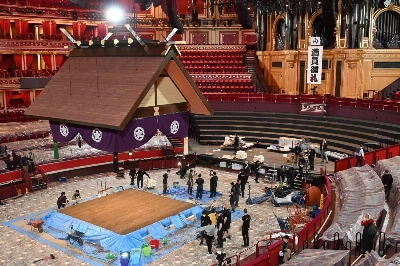Sumo has no weight classes.
The David vs. Goliath clashes that arise as a result of that lack of regulation are a big part of the sport's appeal for many fans.
When a diminutive rikishi like Enho takes down towering opponents that outweigh him by 70 kg or more, it creates a level of excitement that is hard to match.
Mainoumi was the poster boy for smaller rikishi. Despite weighing less than 100 kg and fighting in an era dominated by giants like Konishiki, Akebono and Musashimaru, the former Nihon University man more than held his own.
Rising to sumo's fourth-highest rank of komusubi, Mainoumi won the Technique Prize five times and was so skillful that he earned the nickname "Department Store of Techniques." His most famous win came in 1991 when he downed the 204-cm, 200-kg Hawaiian Akebono with a rare "Triple Attack Force-Out" move that utilized three limbs.
Pavel Bojar wasn't short at 185 cm, but the Czech native struggled to stay above 90 kg for most of his career. Like Mainoumi he relied on speed and skill to defeat bigger wrestlers.
While there have been smaller yokozuna in the past, it's been almost 45 years since Kitanoumi became the most recent man under 180 cm at the sport's highest rank. In the modern era grand champions tend to be around 185 cm tall and weigh over 150 kg.
Asashoryu, one of the most dominant wrestlers in sumo history was considered an undersized yokozuna at 184 cm and 145 kg.
Currently the makuuchi division has several rikishi under 180 cm and two below 170 cm.
Enho (169 cm, 99 kg) and Terutsuyoshi (169 cm, 112 kg) have contrasting styles and neither man is ever likely to challenge for the Emperor's Cup, but their very presence in the top division demands respect and makes sumo that unique sport that it is.

















With your current subscription plan you can comment on stories. However, before writing your first comment, please create a display name in the Profile section of your subscriber account page.